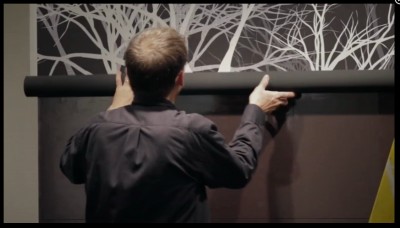Reducing waste
Typically, wide-format graphics printed onto a polyvinyl chloride (PVC) substrate cannot be reused or recycled. Once they are outdated, the retailer must remove and then discard all of the materials before starting the process all over again, ordering completely new graphics. This is an expensive and wasteful practice.
With magnetic-receptive materials, waste is reduced because the graphics are more easily installed and removed, but also layered, allowing POP displays to be updated without having to replace frames, fasteners and/or adhesives.
Additionally, most of the media can be recycled through a complete ‘end-of-life’ process, which may involve returning materials to the manufacturer. Some magnetic-receptive graphics systems are made up of 100 per cent recyclable products, including PVC-free base materials, and media formulated with 20 to 50 per cent post-consumer products.
So, future updates do not mean retired graphics must be sent to a landfill. Instead, magnetic-receptive media can typically yield an energy source—i.e. it is used for electricity production—and new steel production, due to the high iron content of the coating.
The energy-from-waste process involves shredding the material and feeding it into a system with multiple boilers. The steam produced by the boilers is used to power a turbine that generates electricity.
Meanwhile, prior to the waste being fed through the boilers, the process also involves the recovery of ferrous material. Any that is missed during this front-end extraction is later separated from the boilers’ ash byproduct.
For every 0.9 t (1 ton) of retired graphics processed, nearly the same quantity of greenhouse gases (GHGs) is avoided that would otherwise have been emitted during new steel production. And for every 1.2 t (1.3 tons) of ferrous metals extracted from the magnetic-receptive materials, a new hybrid car can be produced.

Thin, flexible magnetic sheeting can easily be rolled into position or repositioned by any in-store personnel.
Additional benefits
As suggested earlier, beyond creating more sustainable graphic displays, magnetic-receptive media also offer other advantages over traditional print media, such as rigid boards, adhesive-backed PVC or even a direct-print magnetic substrate.
For one thing, magnetic-receptive media are designed for ease of installation, repositioning, removal and change-out. Rolling the thin, wrinkle-free film onto the desired surface takes only a few seconds and requires no specific installation expertise. Any in-store personnel can handle it, with no resulting flaws.
Also, once magnetic fixtures are installed in-store, roll-based magnetic-receptive graphics will drastically reduce the retailer’s signage shipping costs—in some cases, by more than 50 per cent—and eliminate the hassle of incidental damages during transportation. The films are six times lighter than printable magnets, too.
Indeed, magnets designed for direct printing are typically thick and tend to limit graphic size and quality. Magnetic-receptive media will not only be less likely to suffer dings or corner damage during shipping and installation, but will also offer optimized surfaces for photo-quality graphics, similar to other common printable substrates.
As for the aforementioned dimensional capabilities, magnetic-receptive graphics can be overlaid in as many as three tiers. Event-based special notices can be applied to a base graphic, along with die-cut overlays or even 3-D fixtures, allowing various elements to be changed based on different seasons and promotional campaigns. The graphics can be layered onto flat and curved surfaces alike.
Finally, the more frequently the images are changed, the greater the savings, giving retailers the option to put these savings toward new graphics. In fact, magnetic-receptive media can save 30 per cent or more in terms of total cost of ownership (TCO) compared to board- or PVC-based graphic installations. And while printing direct-to-board has cost-efficiency advantages over printing graphics first and then mounting them to a board, both of these types of displays can be relatively bulky and expensive to ship and, after delivery, difficult and time-consuming to install in the store, let alone prone to warping and edge damage.
“We’ve seen a great amount of interest in magnetic-receptive systems from sign shops and retailers in Canada,” says Marc Huot, regional manager for Drytac Canada, which manufactures and distributes mounting adhesives, laminating films, coatings and finishing equipment, including liquid laminators. “This innovative technology not only allows for graphics that are considerably more environmentally friendly than traditional signage options, but also offers impressive savings in terms of cost and ease of installation and change-out. It is really a winning option all around, from the perspective of the print professional and the retailer.”
Dan Halkyard is director of marketing and product management for Visual Magnetics, which develops magnetic-receptive graphic systems. For more information, visit www.visualmagnetics.com.





